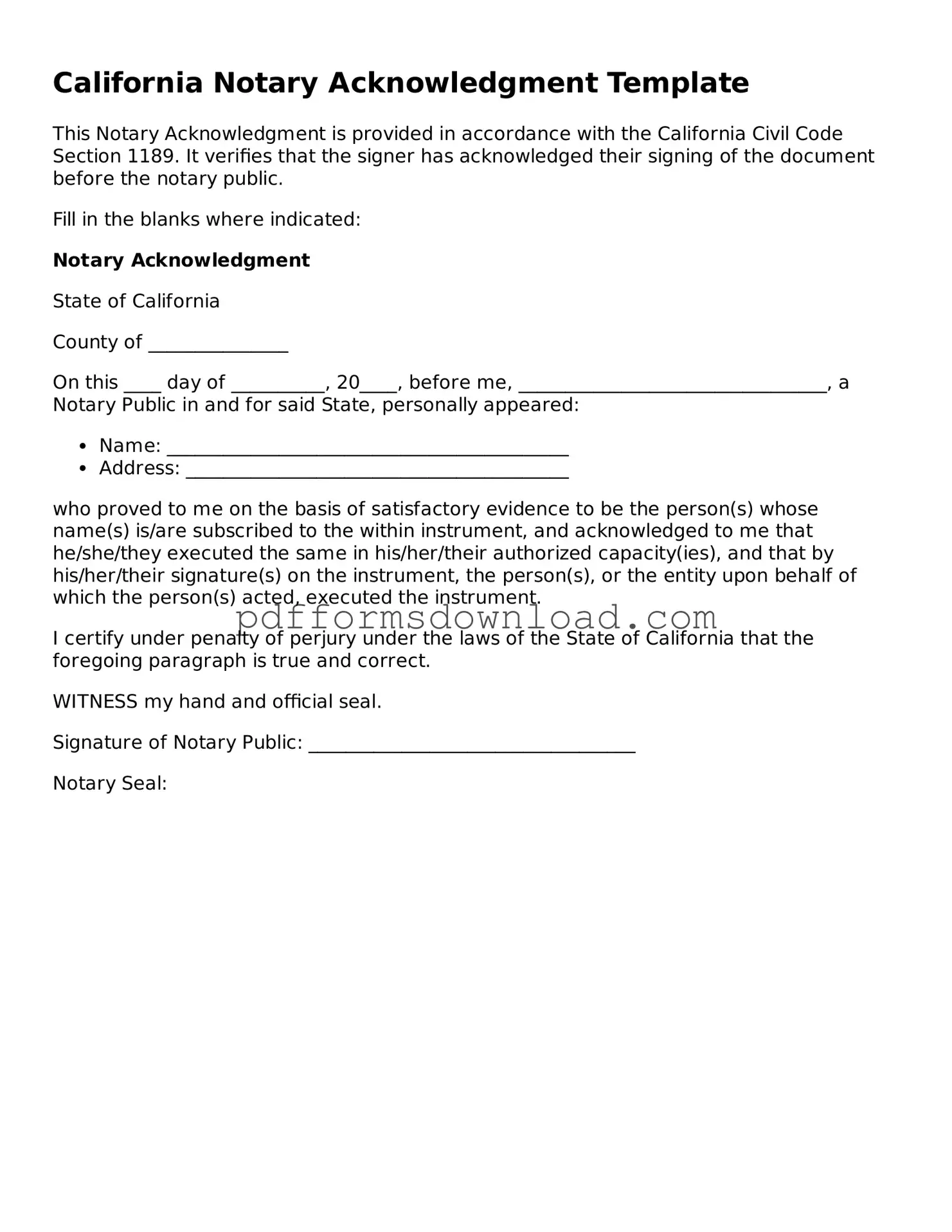What is a California Notary Acknowledgement form?
The California Notary Acknowledgement form is a legal document that a notary public uses to confirm that a signer has willingly signed a document. This form serves as proof that the signer is who they claim to be and that they signed the document in front of the notary.
When do I need a Notary Acknowledgement?
You typically need a Notary Acknowledgement when signing important documents such as contracts, deeds, or powers of attorney. It is often required for documents that will be filed with a government agency or used in legal proceedings.
How do I complete a Notary Acknowledgement form?
To complete a Notary Acknowledgement form, you will need to provide the following information: the name of the signer, the date of the signing, and a description of the document being signed. The notary will then fill in their details and sign the form, certifying that they witnessed the signing.
Can I use a Notary Acknowledgement for any type of document?
Not all documents require a Notary Acknowledgement. However, it is commonly used for documents that need to be recorded or are required by law to have notarization. Always check if your specific document requires this form.
What is the difference between a Notary Acknowledgement and a Notary Jurat?
A Notary Acknowledgement confirms that a signer has signed a document, while a Notary Jurat involves the signer taking an oath or affirmation regarding the truthfulness of the document. Choose the appropriate form based on the requirements of your document.
Is there a fee for notarization in California?
Yes, California law allows notaries to charge a fee for their services. The maximum fee for a standard notarization is set by the state. Always confirm the fee with your notary before proceeding.
Do I need to bring identification to the notary?
Yes, you must present valid identification to the notary. Acceptable forms of ID include a driver's license, passport, or any government-issued ID that includes your photo and signature. The notary needs to verify your identity before notarizing the document.
Can a notary refuse to notarize my document?
A notary can refuse to notarize a document if they believe that the signer is not acting willingly, if the document is incomplete, or if the notary cannot verify the signer's identity. It's important to ensure that all conditions are met before seeking notarization.
How long is a Notary Acknowledgement valid?
A Notary Acknowledgement is valid as long as the document it accompanies is valid. However, if the document is not recorded or used within a certain timeframe, check with the relevant agency to ensure it remains acceptable.
Where can I find a notary in California?
You can find a notary in California at various locations, including banks, law offices, and shipping centers. Additionally, many notaries offer mobile services and can meet you at your preferred location. Online directories can also help you locate a notary nearby.
